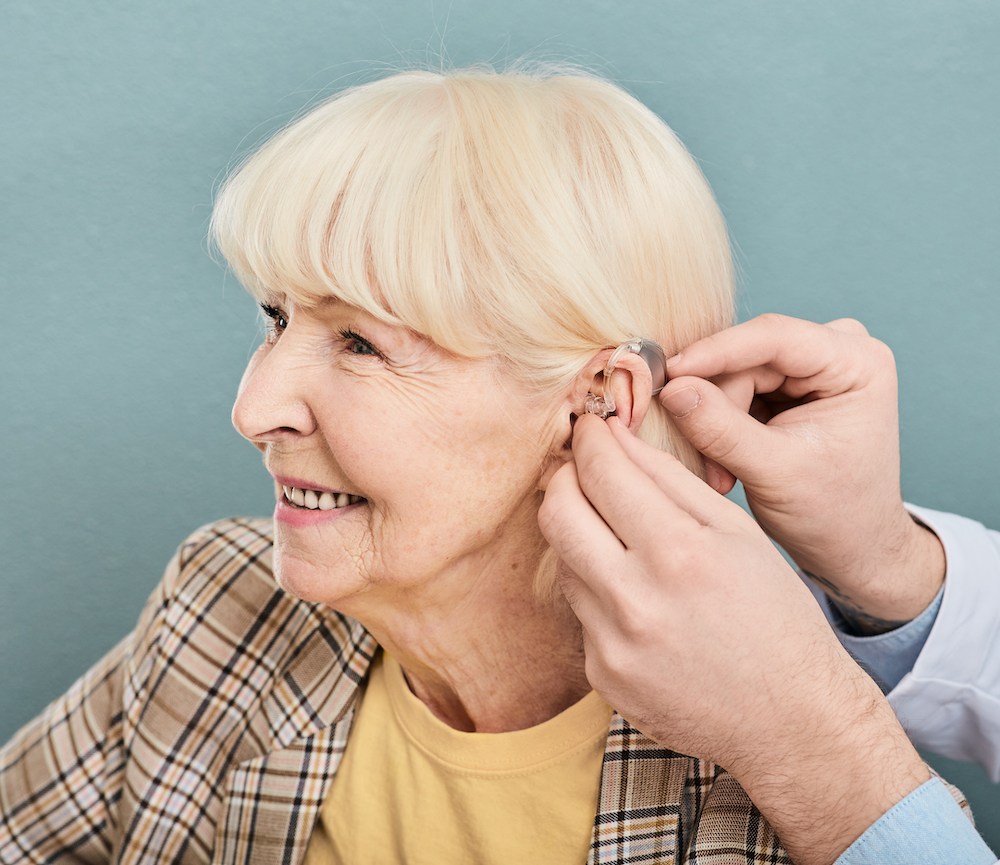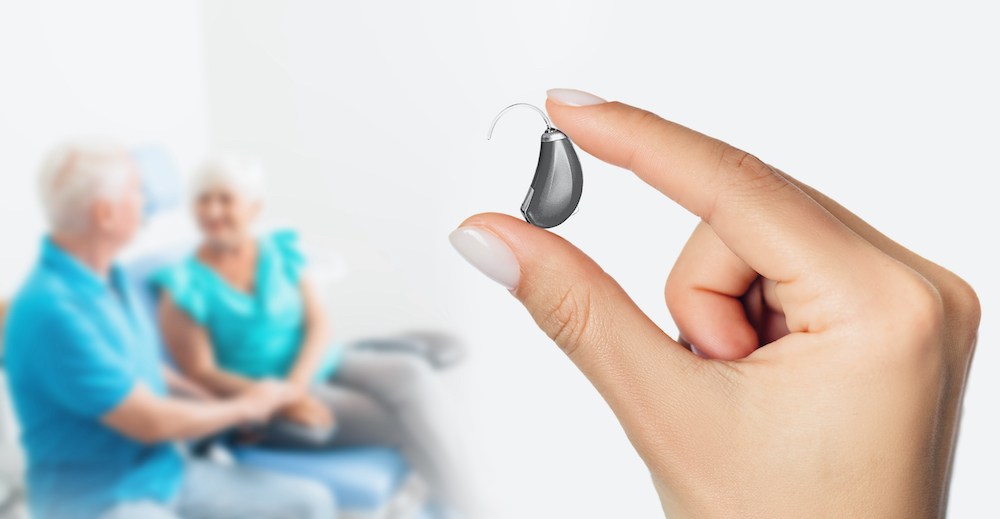How Audiologists Stay Current with Industry Changes
The field of hearing care moves forward at a remarkable pace, with new
New Location Now Open in Eugene! LEARN MORE →

By: admin | March 26, 2024
Starting the process of addressing hearing loss might feel a bit like stepping into a maze. The path may seem intricate, but with the right understanding and guidance, it can lead you to a transformative outcome: improved hearing and an enhanced quality of life. One key milestone on this path is getting a hearing aid fitted, a process that can sometimes feel overwhelming if you haven’t been through it before. But once you grasp it, you’ll feel capable of wearing, using and maintaining your new devices effectively.
Getting a hearing aid fitted isn’t just about finding a device that sits comfortably in your ear. It’s about adjusting the device to meet your specific needs. Since everyone’s hearing loss is different, each hearing aid needs to be tailored to the individual. A well-adjusted device will amplify sounds at the right volume across different frequencies, helping you hear clearly in various environments – from quiet conversations at home to the lively city streets or busy restaurants. With this understanding, you’ll feel more confident as you continue on your path towards better hearing health.
Let’s talk about why an accurate hearing aid fit is so important. It’s not just about comfort; it plays a key role in how effectively your hearing aid works for you. Here are some main reasons why a precise fit is necessary:
Understanding your hearing test results is a significant step in your hearing health process. The results from your hearing test are typically presented on an audiogram, a graph that plots the softest sounds you can hear at different pitches or frequencies. The right side of the graph represents your right ear and the left side represents your left ear. Reading this graph helps you and your specialist understand where exactly you’re experiencing hearing loss and to what degree. This knowledge forms the basis for selecting and adjusting a suitable hearing aid, paving the way for improved auditory experiences.
Choosing the right hearing aid for you is a crucial detail to treating your hearing loss effectively and living a life full of sound. With so many options available, making this decision can seem challenging – but don’t worry – your audiologist will help guide you in the right direction.
Your audiologist is there to help you select the perfect device that aligns with your unique needs and lifestyle. They’ll consider various factors like your degree of hearing loss, your lifestyle requirements and even your aesthetic preferences. Are you more active and need a robust device? Or do you prefer something discreet and almost invisible? Your answers to these questions will guide the selection process.
The goal is to find a hearing aid that not only improves your auditory experience but also fits seamlessly into your daily life. So don’t hesitate to express your needs and preferences clearly during this stage. After all, it’s about finding a device that suits you perfectly!
When programming your hearing aid, your audiologist takes several factors into account to ensure optimal performance tailored to your specific needs. Firstly, they consider the results of your hearing test, which provide insights into the frequencies and volumes you struggle to hear. Additionally, they discuss your lifestyle, listening environments and communication preferences to customize the settings accordingly.
Factors like your ability to adapt to new sounds, your comfort level with amplification and any specific listening challenges you encounter are also taken into consideration. The audiologist adjusts the hearing aid’s settings based on feedback from real-world use, fine-tuning parameters like volume, frequency response and noise reduction to maximize your hearing comfort and clarity in various situations.
Now, let’s look at the steps involved in hearing aid calibration. This process is vital in fine-tuning your device to match your specific hearing needs. It’s not a one-size-fits-all approach; instead, it involves a series of adjustments to ensure the best possible sound quality for you.
The calibration process usually follows a checklist. First, your professional will adjust the volume levels across different frequencies based on your audiogram results. Next, they’ll fine-tune these settings for various environments – whether you’re at home, in a restaurant or outside in nature. Lastly, they’ll make adjustments based on your feedback about how you’re experiencing different sounds. Your input is vital in this step! By sharing your experiences and preferences with your specialist, you can help ensure that your hearing aid is calibrated perfectly for you.
Real-ear measurement (REM) plays a significant role in achieving optimal hearing aid performance. REM is a method that helps ensure your hearing aid is delivering the precise level of amplification needed at each frequency. It offers highly personalized adjustments for your hearing loss and an improved listening experience. However, it requires additional time during your fitting appointment and not all clinics offer this service.
Despite this, the benefits of REM are substantial enough to warrant consideration. According to a study by the American Journal of Audiology, only 33% of patients fitted with hearing aids using standard manufacturer settings (without REM) achieved satisfactory amplification. In contrast, this number jumped to 70% when real-ear measurement was used in the fitting process. This statistic underscores how vital REM can be in optimizing your hearing aid performance for a superior auditory experience.
When it comes to the balance between comfort and efficiency during the fitting process, it’s important to understand that both aspects are key to a successful hearing aid experience. The device should feel comfortable in your ear, but it also needs to function effectively in amplifying sounds.
First, don’t hesitate to express any discomfort or issues with your hearing aid to your specialist; they can make necessary adjustments for a better fit. Second, regularly check on the efficiency of your device by noting how well you hear in different environments; if something doesn’t seem right, reach out to your audiologist for assistance. Balancing comfort and efficiency is crucial – it ensures you get the most out of your hearing aid while feeling at ease using it daily.
Let’s now talk about feedback management in modern devices. It’s an essential feature that can greatly enhance your auditory experience. Feedback in hearing aids refers to the annoying whistling or buzzing noise you might occasionally hear. This usually happens when amplified sound escapes from your ear and re-enters the hearing aid microphone, creating a loop of sound that results in feedback. It can be a nuisance, especially when eating, speaking or inserting and removing your device.
Modern hearing aids have advanced features to manage this feedback effectively. They are designed with automatic feedback cancellation systems that detect these loops and eliminate them before they cause any whistling noise. This ensures you have a smooth and comfortable listening experience, free from any disruptive noises. If you still encounter persistent feedback issues despite these systems, it’s advisable to consult with your specialist for possible solutions like adjusting the fit of your device or checking for earwax buildup which might be causing the issue.
Adjusting to using your new hearing aid can be a significant change in your life, but with some helpful hints and strategies, you’ll soon get used to your new device.
Here are a few tips that might make this transition easier:
Proper device maintenance plays a pivotal role in ensuring the success of your hearing aid. A well-maintained device not only performs optimally but also extends its lifespan. Regular cleaning and frequent battery checks can make a world of difference!
In addition, regular visits to your audiologist for professional cleanings and check-ups are equally important. They can identify any minor issues before they become major problems and keep your device functioning at its best. Make sure to schedule these appointments as part of your routine healthcare regimen. In doing so, you’re taking proactive steps towards maintaining the quality of your hearing aid and consequently, enhancing your auditory experience!
Finding your way to better hearing might seem intricate, but with the right understanding and professional guidance, you’re well on your way to improving your quality of life. At Advanced Hearing Plus, we’re here to guide you through every step of this process. From understanding your unique hearing needs to selecting and fitting the perfect device for you – we’ve got it all covered. If any questions or concerns arise during this process, don’t hesitate to reach out to our team in Springfield, OR by calling (541) 313-3550.
Tags: hearing aid basics, hearing aid fitting, how-to guides

The field of hearing care moves forward at a remarkable pace, with new
By: admin | May 23, 2025

For many of us who wear hearing aids, these small devices become an
By: admin | March 21, 2025

Investing in hearing aids is a significant decision, and understanding the
By: admin | February 6, 2025
